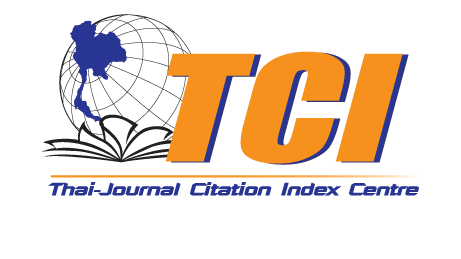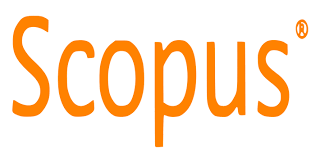ผลการใช้นวัตกรรมการเรียนรู้ด้านปัญญาประดิษฐ์ สำหรับเด็กประถมศึกษา
คำสำคัญ:
นวัตกรรมการเรียนรู้, ปัญญาประดิษฐ์, เด็กประถมศึกษาบทคัดย่อ
บทความวิจัยนี้มีวัตถุประสงค์เพื่อศึกษาผลการใช้นวัตกรรมการเรียนรู้ปัญญาประดิษฐ์สำหรับเด็ก ประถมศึกษา เป็นการวิจัยเชิงปริมาณ ตัวอย่างวิจัยที่ใช้ในการวิจัยครั้งนี้ คือ นักเรียนที่กำลังศึกษาชั้นประถมศึกษาปีที่ 1 - 5 ปีการศึกษา 2565 โรงเรียนในจังหวัดนครปฐม จากโรงเรียนที่ได้การตอบรับการเข้าร่วมโครงการวิจัย จำนวน 9 โรงเรียน โดยเลือกแบบเจาะจง ตัวอย่างวิจัยจำนวน 1,065 คน ได้ดำเนินการ โดยครูทดลองใช้นวัตกรรมการเรียนรู้ปัญญาประดิษฐ์ โดยดำเนินการทดลองโดยแยกการเรียนตามระดับชั้นประถมศึกษาปีที่ 1 จนถึงประถมศึกษาปีที่ 5 เป็นเวลาสัปดาห์ละ 2 ครั้ง ครั้งละ 1 ชั่วโมง จำนวน 5 สัปดาห์ โดยเรียงการเรียนโมดูลการเรียนรู้ที่ 1 - 5 จนครบทุกโมดูลการเรียนรู้ ประกอบไปด้วย โมดูลที่ 1 การรับรู้สภาวะแวดล้อม โมดูลที่ 2 การแทนความรู้และการให้เหตุผล โมดูลที่ 3 การเรียนรู้ของเครื่อง โมดูลที่ 4 การโต้ตอบอย่างเป็นธรรมชาติ โมดูลที่ 5 ผลกระทบของปัญญาประดิษฐ์ต่อสังคม เครื่องมือที่ใช้ในการวิจัย คือ แบบประเมินความสามารถด้านปัญญาประดิษฐ์ ที่มีลักษณะเป็นมาตรประมาณค่า 5 ระดับ หาคุณภาพด้วยค่าดัชนีความสอดคล้องพบว่า รายการวัดทุกข้อมีค่ามากกว่า 0.6 และค่าสหสัมพันธ์ภายในชั้น (ICC) เท่ากับ 0.802 ที่ระดับความเชื่อมั่น 95% การวิเคราะห์ข้อมูลในการวิจัยครั้งนี้ ใช้สถิติพื้นฐาน ได้แก่ ค่าเฉลี่ย ส่วนเบี่ยงเบนมาตรฐาน one sample t-test ผลการวิจัย พบว่า ผลการใช้นวัตกรรมการเรียนรู้ ปัญญาประดิษฐ์สำหรับเด็กประถมศึกษา มีคะแนนความสามารถปัญญาประดิษฐ์ของนักเรียนชั้น ประถมศึกษาปีที่ 1 - 5 ส่วนใหญ่อยู่ในระดับดีมาก และผลการเปรียบเทียบกับเกณฑ์ร้อยละ 70 นักเรียนมี ความสามารถด้านปัญญาประดิษฐ์สูงกว่าเกณฑ์ที่ตั้งไว้ อย่างมีนัยสำคัญทางสถิติที่ระดับ .05 ในทุกระดับชั้น
เอกสารอ้างอิง
ปรณัฐ กิจรุ่งเรือง. (2558). การวิจัยเชิงปฏิบัติการแบบมีส่วนร่วมเพื่อพัฒนารูปแบบการเสริมสร้างศักยภาพอาจารย์นิเทศก์ และอาจารย์พี่เลี้ยง เพื่อพัฒนาศักยภาพด้านการเป็นพี่เลี้ยงวิชาการสำหรับนักศึกษาวิชาชีพครู. กรุงเทพมหานคร: สำนักงานคณะกรรมการการวิจัยแห่งชาติ.
Ali, S. et al. (2019). Constructionism, ethics, and creativity: Developing primary and middle school artificial intelligence education. In International workshop on education in artificial intelligence K-12 (EDUAI'19) (pp. pp. 1-4). MIT Media Lab.
Association for the Advancement of Artificial Intelligence (AAAI). (2018). AAAI Launches “AI for K-12” Initiative in Collaboration with the Computer Science Teachers Association (CSTA) and AI4All [Press release]. Retrieved July 17, 2010, from https://aaai.org/Pressroom/Releases/release-18-0515.php
Dodds, Z. et al. (2008). AI Education Colloquium. Technical Report & AI Education Workshop Papers WS-08-02. California: AAAI Conference on Artificial Intelligence.
Holmes, W. et al. (2019). Artificial intelligence in education. Boston: Center for Curriculum Redesign.
McCarthy, J. (2007). What is Artificial Intelligence. Retrieved July 17, 2010, from http://www-formal.stanford.edu/ jmc/whatisai/node1.htm
Kandlhofer, M. et al. (2016). Artificial Intelligence and Computer Science in Education: From Kindergarten to University. Retrieved December 11, 2020, from https://ieeexplore.ieee.org/document/7757570
Langley, P. (2019). An integrative framework for artificial intelligence education. Proceedings of the AAAI Conference on Artificial Intelligence, 33(01), 9670-9677.
Lenat, D. B. & Durlach, P. J. (2014). Reinforcing math knowledge by immersing students in a simulated learning-by-teaching experience. International Journal of Artificial Intelligence in Education, 24(3), 216-250.
Ner, R. H. (2020). Evolution and Revolution in Artificial Intelligence. Evolution, 11(2). 125-129.
Resnick, M. et al. (1996). Pianos not stereos: Creating computational construction kits. Interactions, 3(5), 40-50.
Sudjitjoon, W. et al. (2022). AI learning modules for elementary students. International Journal of Health Sciences, 6(S4), 12239-12249.
The Stanford d. school Bootcamp Bootleg (HPI). (2010). An Introduction to Design Thinking PROCESS GUIDE. Retrieved April 24, 2018, from https://dschool-old.stanford.edu/sandbox/groups/designresources/wiki/36873/attachments/74b3d/ModeGuideBOOTCAM P2010L.pdf
Touretzky, D. et al. (2019). Envisioning AI for K-12: What should every child know about AI? Proceedings of the AAAI conference on artificial intelligence, 33(1), 9795-9799.
West, D. & Allen, J. (2018). How Artificial Intelligence is transforming the world. Retrieved April 24, 2018, from https://www.brookings.edu/research/how artificial-intelligence-is-transforming-the-world
ดาวน์โหลด
เผยแพร่แล้ว
รูปแบบการอ้างอิง
ฉบับ
ประเภทบทความ
สัญญาอนุญาต
ลิขสิทธิ์ (c) 2022 วารสารสังคมศาสตร์และมานุษยวิทยาเชิงพุทธ

อนุญาตภายใต้เงื่อนไข Creative Commons Attribution-NonCommercial-NoDerivatives 4.0 International License.








